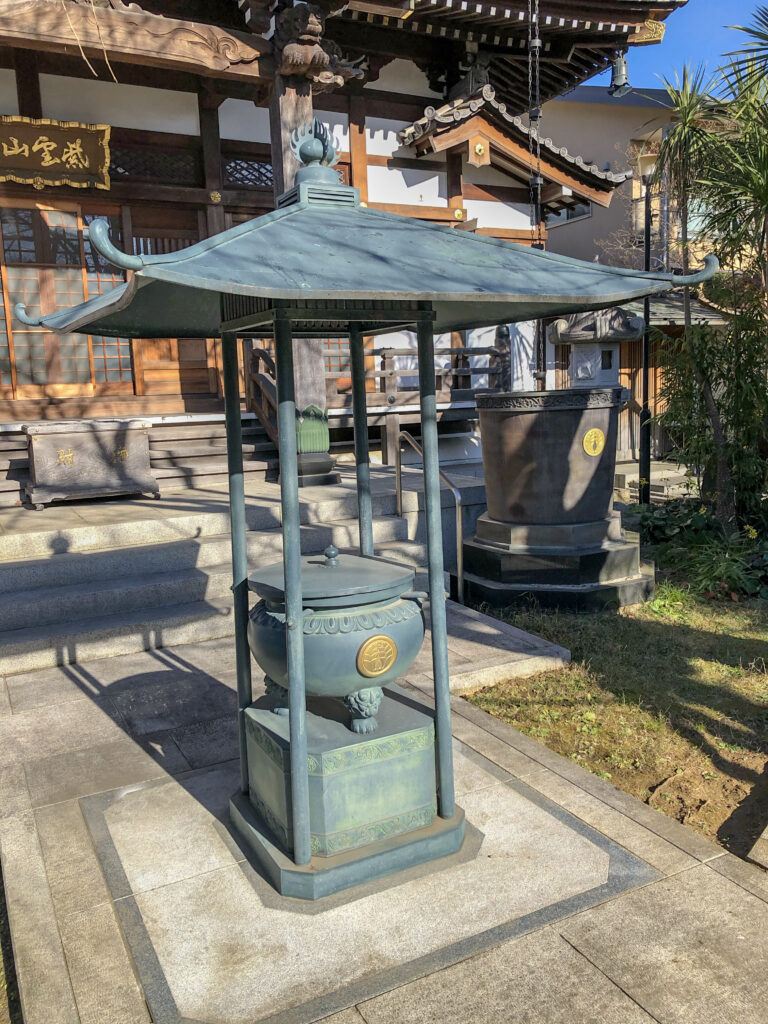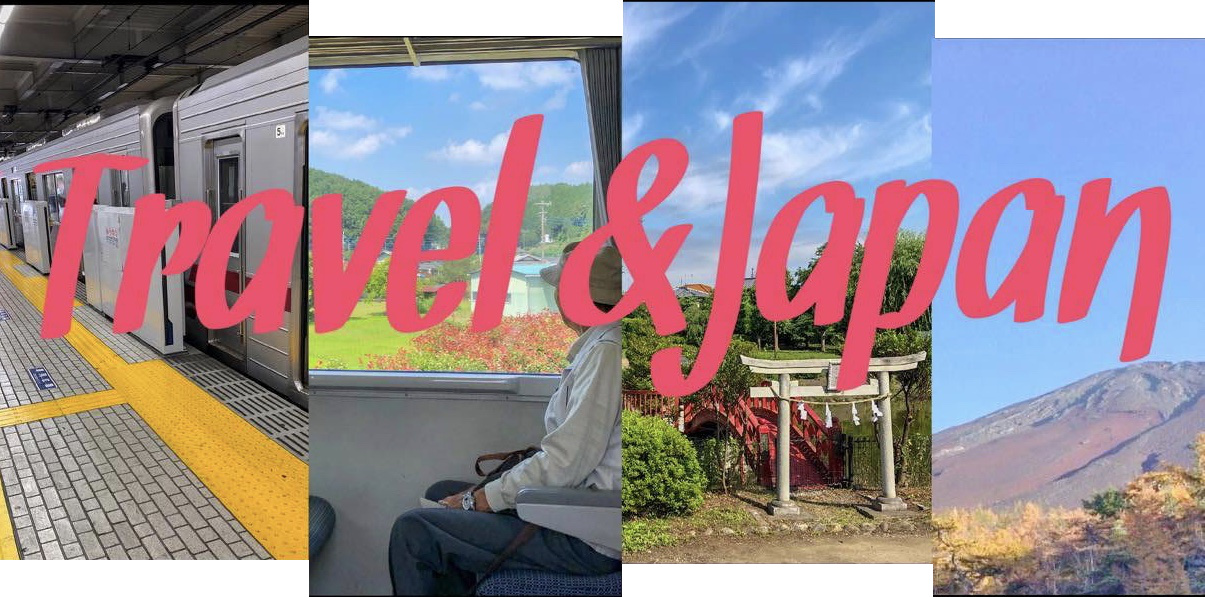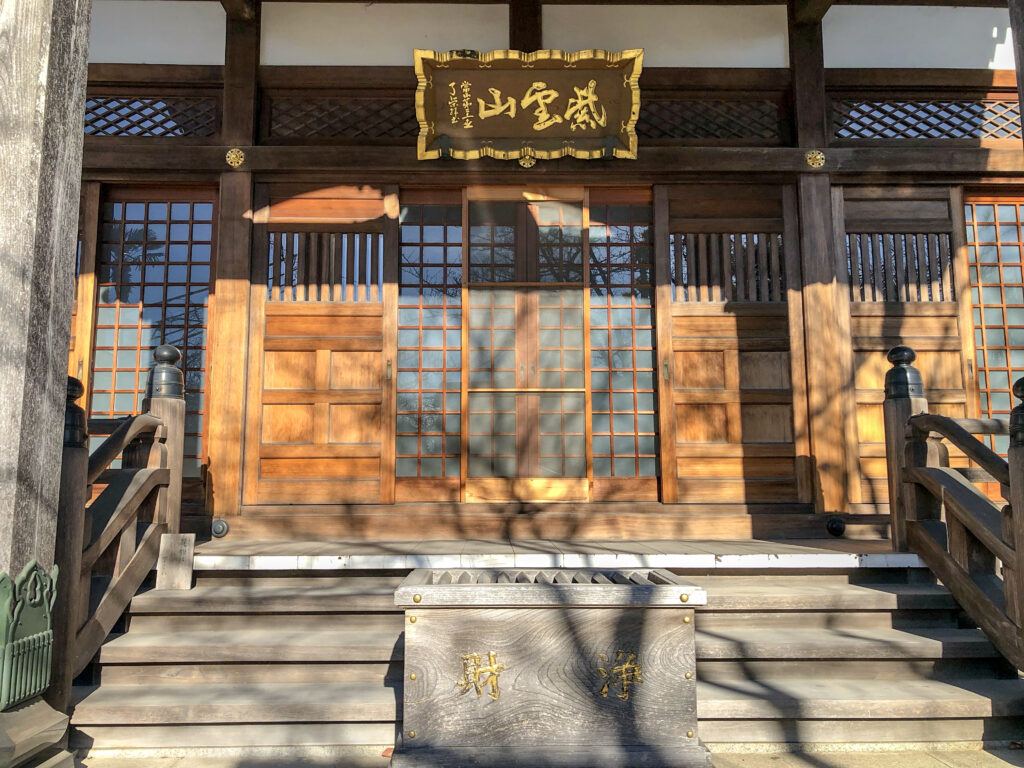
Saikouin is a Buddhist Temple located in Nakawaga, Japan. Nakawaga is in the Adachi providence, which is a part of Tokyo. The temple grounds have several cherry trees, and there is a cemetery including tombs. The temple is part of the 88 places of the new Shikoku Pilgrimage.
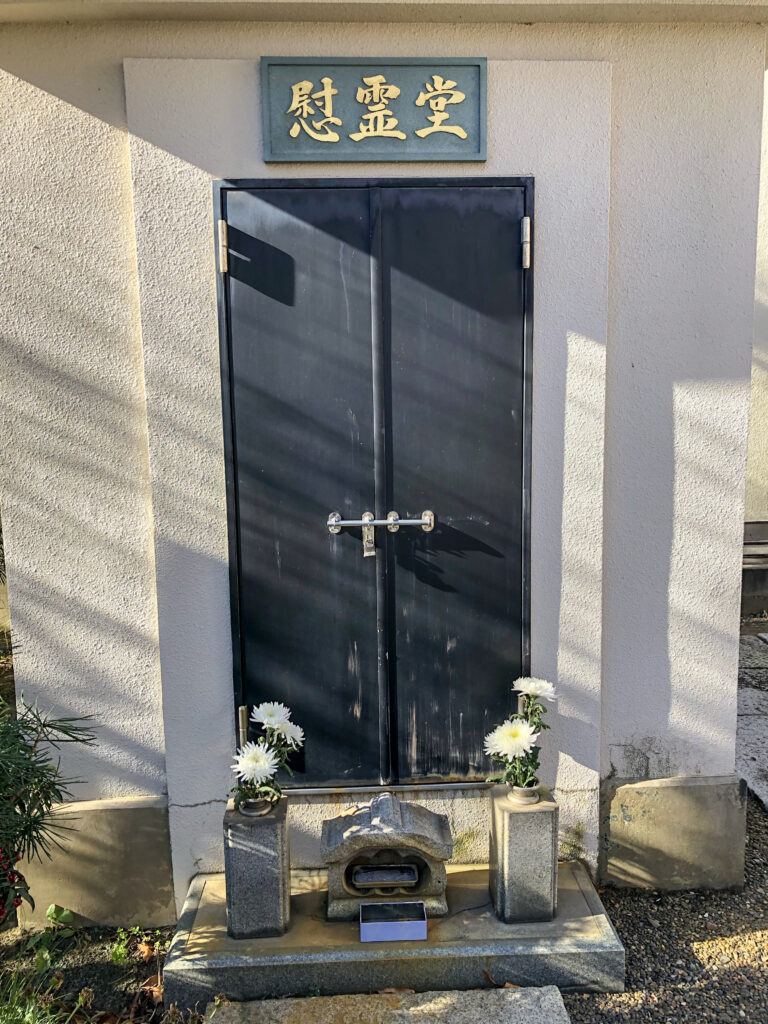
Peaceful and restful, the temple is where worshipers come and relax under the cherry trees to talk with their ancestors. If you find yourself in Adachi, Tokyo, it’s worth your time to visit this shrine. The history and culture at this place will inspire you.
About Saikouin
Address: 3-21-20 Nakagawa, Adachi-Ku
Age: About 400 years old, early Edo period (Exact date is unknown)
This temple is right next to the Nagato Chinju Hachiman Shrine.
Medium size, but the well-kept cemetery is surrounding the shrine with several tombs.
88 Places
The temple is number 10 on the list of 88 places of the new Shikoku Pilgrimage. This pilgrimage is about visiting temples along the Nakagawa River that have a statue of Kobo Daishi.
See the full list here. The website uses the Japanese language, so use a browser that can translate for you.
Entrance
The temple ground has a wall around it like most cemeteries in Japan, but there is also a locking gate. I didn’t notice hours, so I assume that everyone in the area knows the times the temple grounds are open. I visited the temple on Sunday, and the gate was open. I have viewed several pictures on Google, and most show the gate closed, so perhaps the temple has limited access hours.
Upon entering the grounds, I immediately thought about how clean everything is. The place is over 400 years old but looks almost new. Nothing is disorganized, and the sidewalk is free of debris.
As I look ahead, I see a row of medium Jizo statues, a few trees, and a couple of larger sculptures. One is of Buddha and the other of stone pagodas.
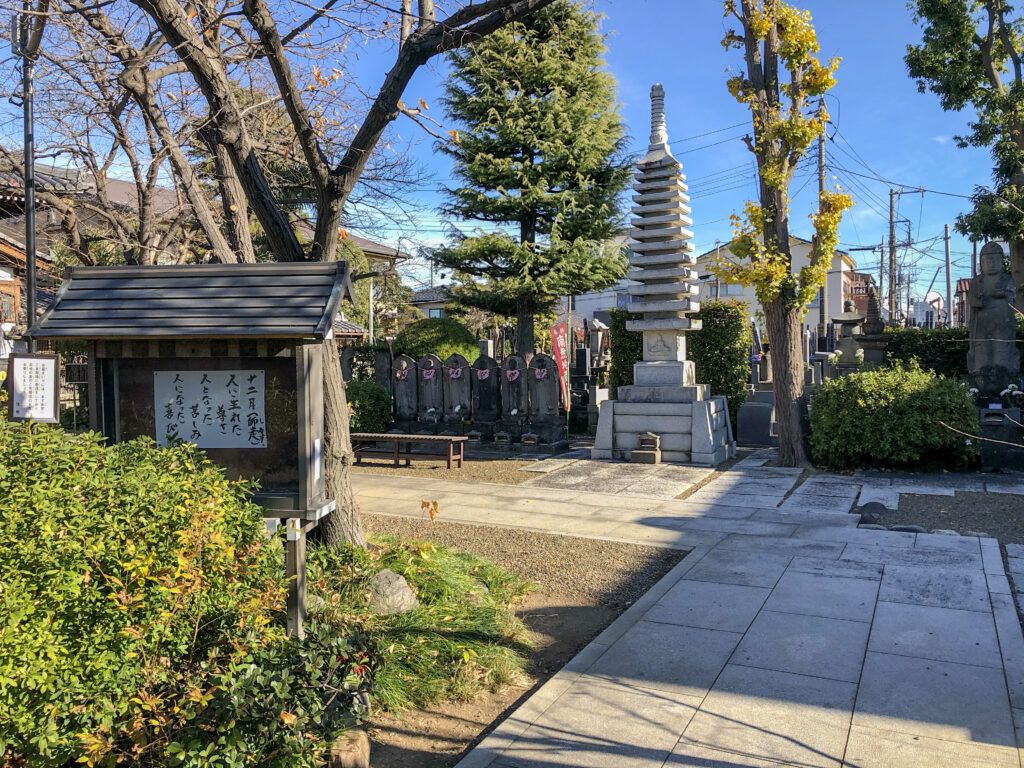
Jizo Statues
Jizo statues are the likeness of Jizo Bosatsu, the Kami of travelers and children. The sculptures predate Buddhist beliefs and are known as “earth bearer” by the Japanese. The name is the reason all Jizo statues are stone.
The Jizo’s are dressed in red bibs and sometimes red hats by the locals. Helping a Buddhist monk stay warm in the cold will gain favor in the afterlife.

Jizo statues also adorn the graves of children who die before their parents. The figure is the protector against yokai until the child can make their way to the afterlife. You’ll often see a pile of rock stacks in front of the Jizo.
Bodhisattva
To my left right inside the gate was a small Bodhisattva area. Bodhisattva is a person who walks the path to Buddhahood. The wooden planks (Sotoba) next to the Jizo statue have people’s names and prayers.
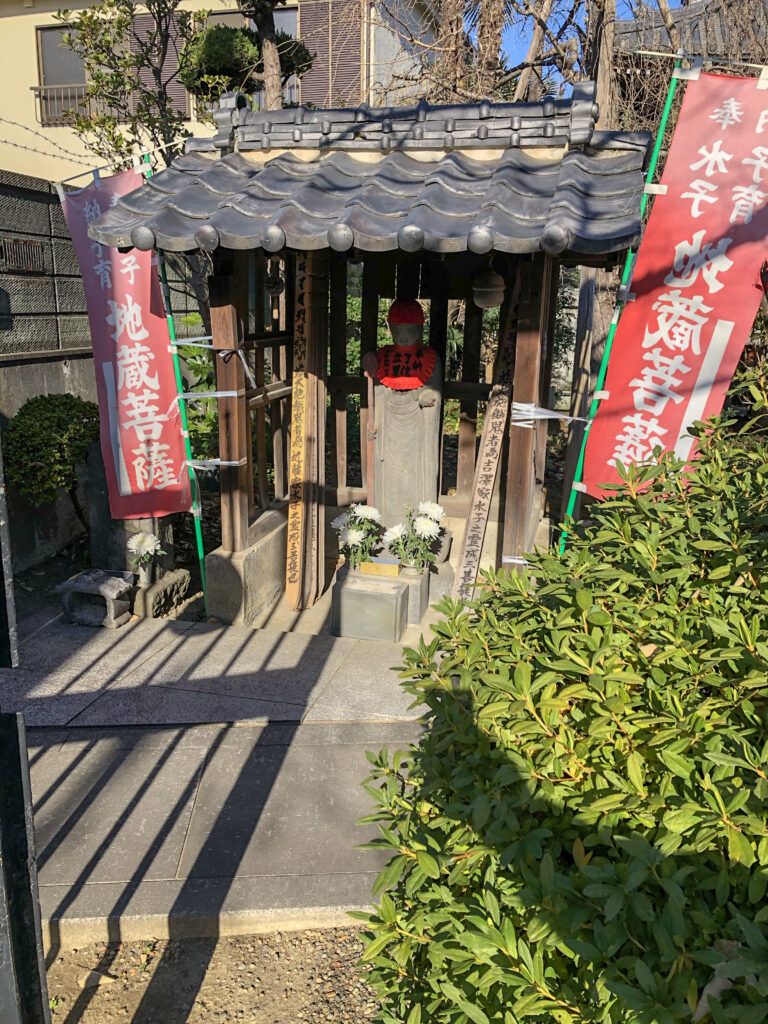
Temple Area
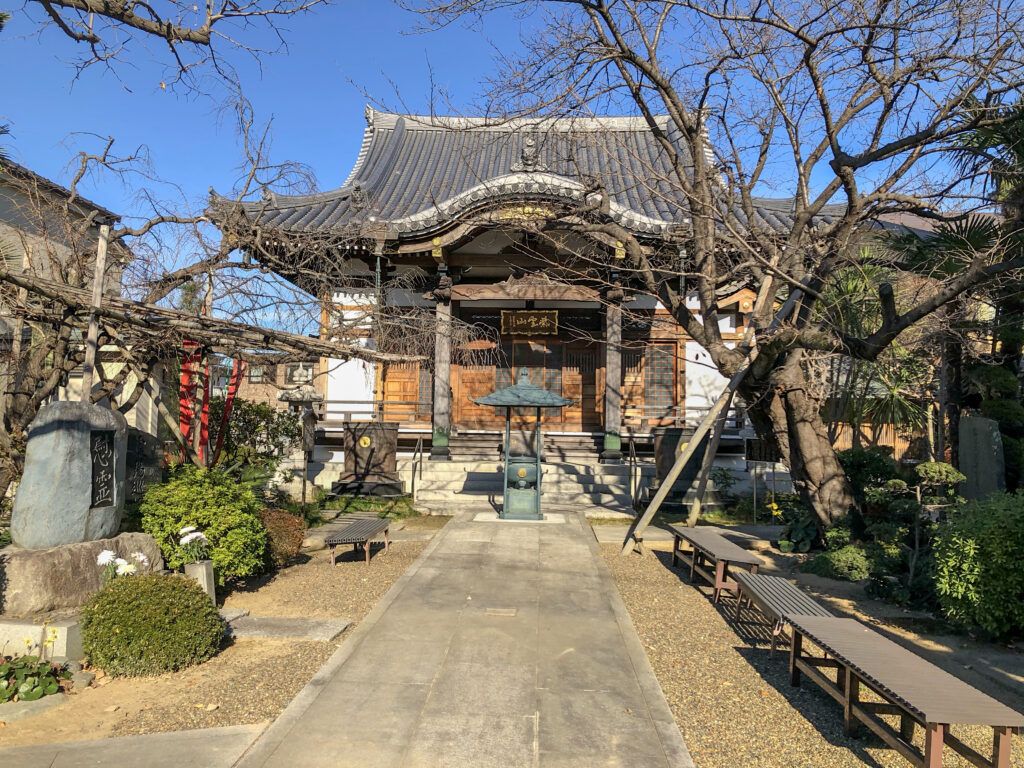
Just a few steps inside, I turned left, and before me was the temple. There are several statues to my left and right with the cemetery beyond them. I quickly found the statue of Kobo Daishi. The statue and pedestal were 12 feet at least.
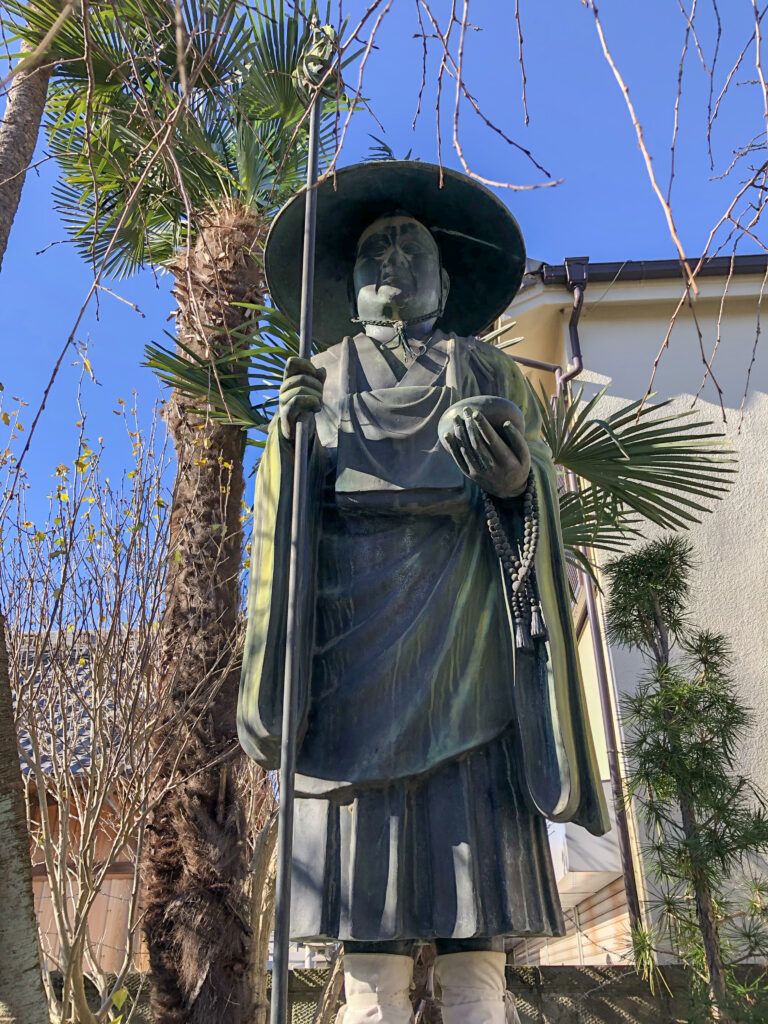
A 10-foot Jizo statue was also here. Offerings were at its feet, along with plenty of flowers. I could tell the old figure is well kept. The small tin offering box bottom was full of coins. There must have been ¥500 made of ¥5 coins.
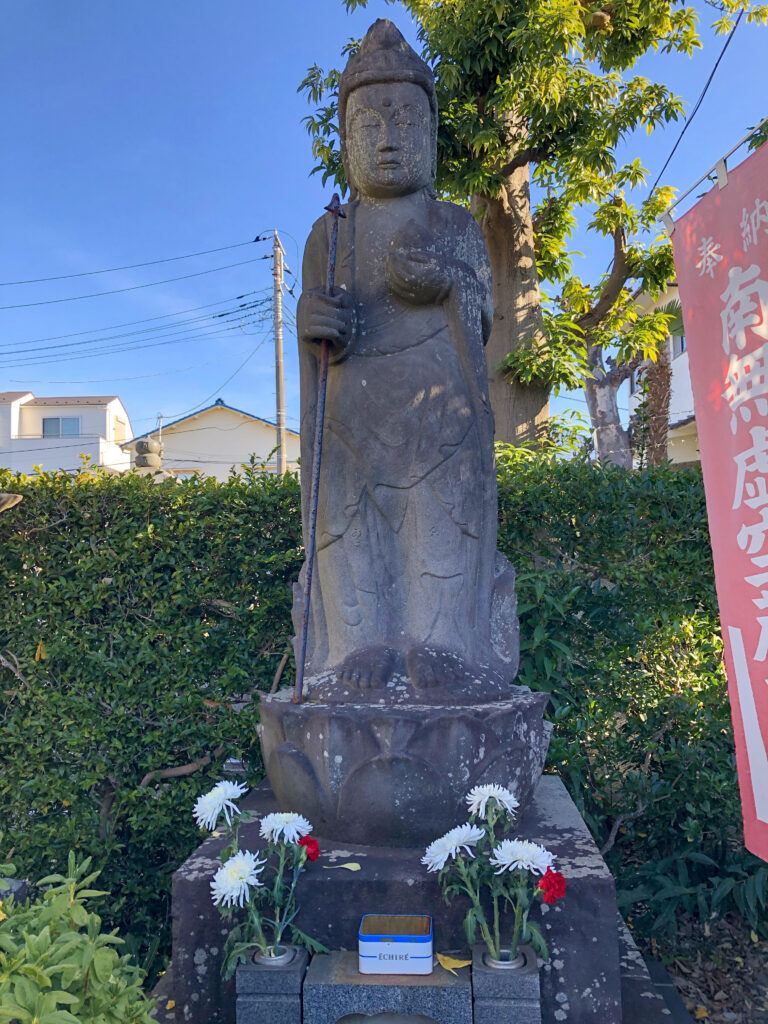
Temple
The front of the temple has benches for guests to sit on. It’s a quiet and peaceful area with large cherry trees. Some of which needed help standing because of the age of the tree.
There are two large buckets in front of the temple with a chain and bucket chain pump system. It’s for display and is rain chains that allow the rainwater to exit the temple’s roof. An excellent and rather large decorative way to get rid of rainwater.
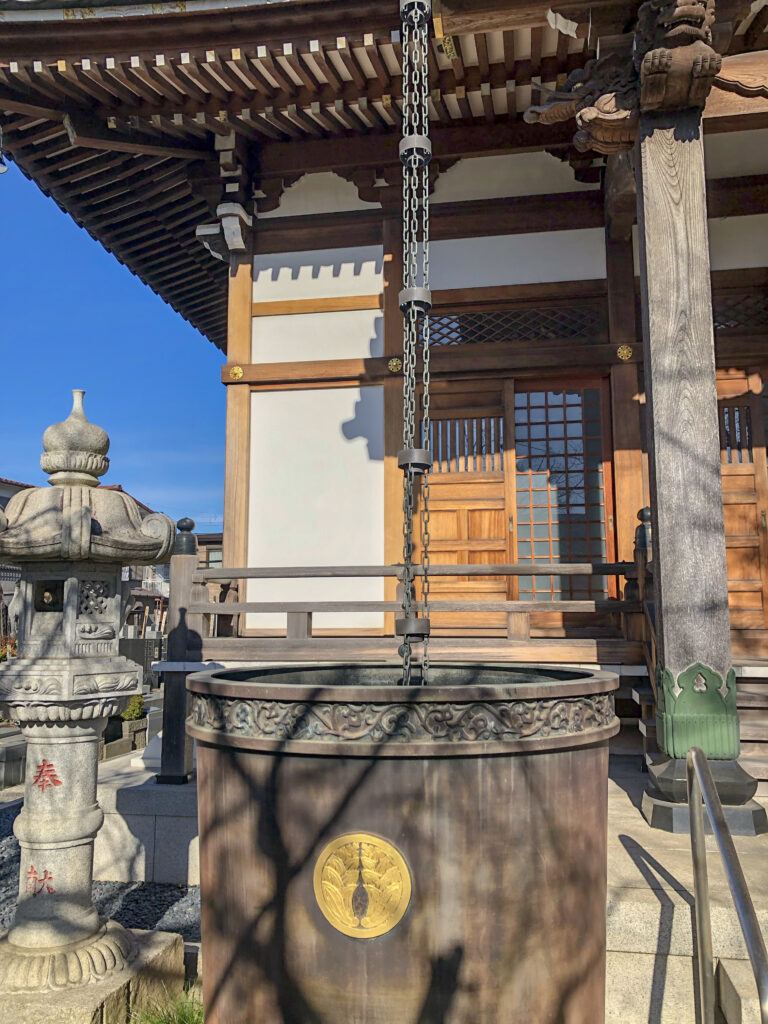
The bell hanging on the temple’s front will ring out 108 times on New Year’s eve. Buddhist believe there are 108 worldly desires.
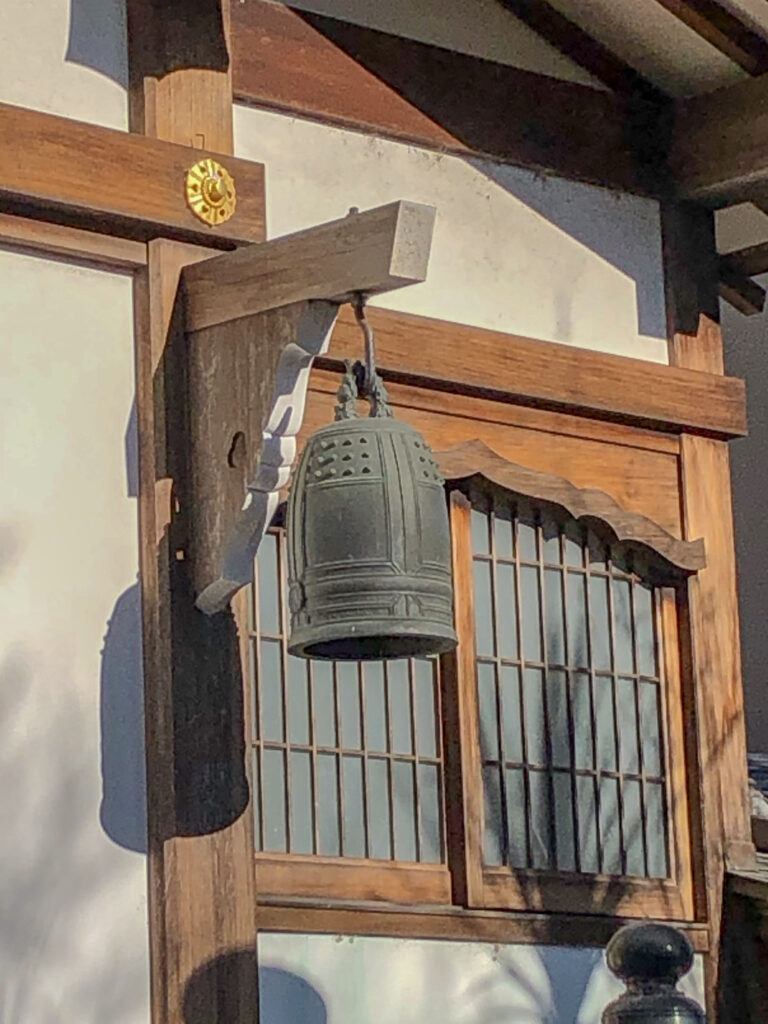
Cemetery
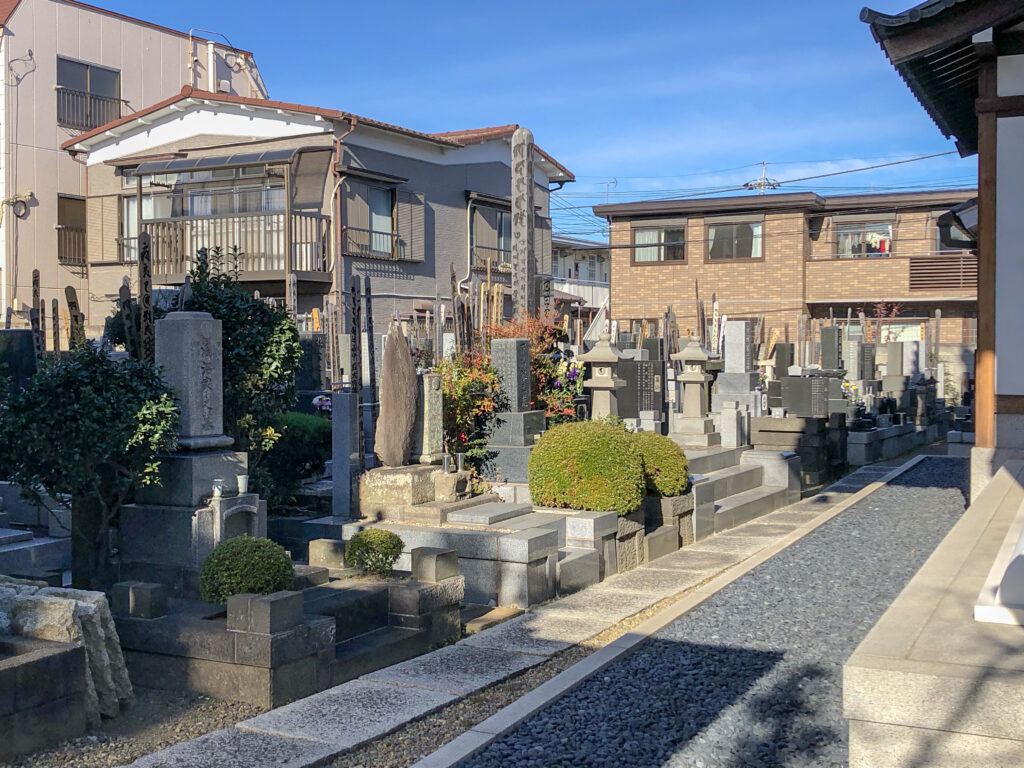
Many of the cemeteries in Japan are Buddhist, so usually, they are located at temples. Visiting the grave of their ancestors is essential to many Japanese, and they visit frequently. Obon is the most popular time. Read about Obon here.
Japanese not only talk to their ancestors out loud at the gravesite but also in public. They share their day and ask for help. I have often seen a person talking to their ancestor while walking down the street.
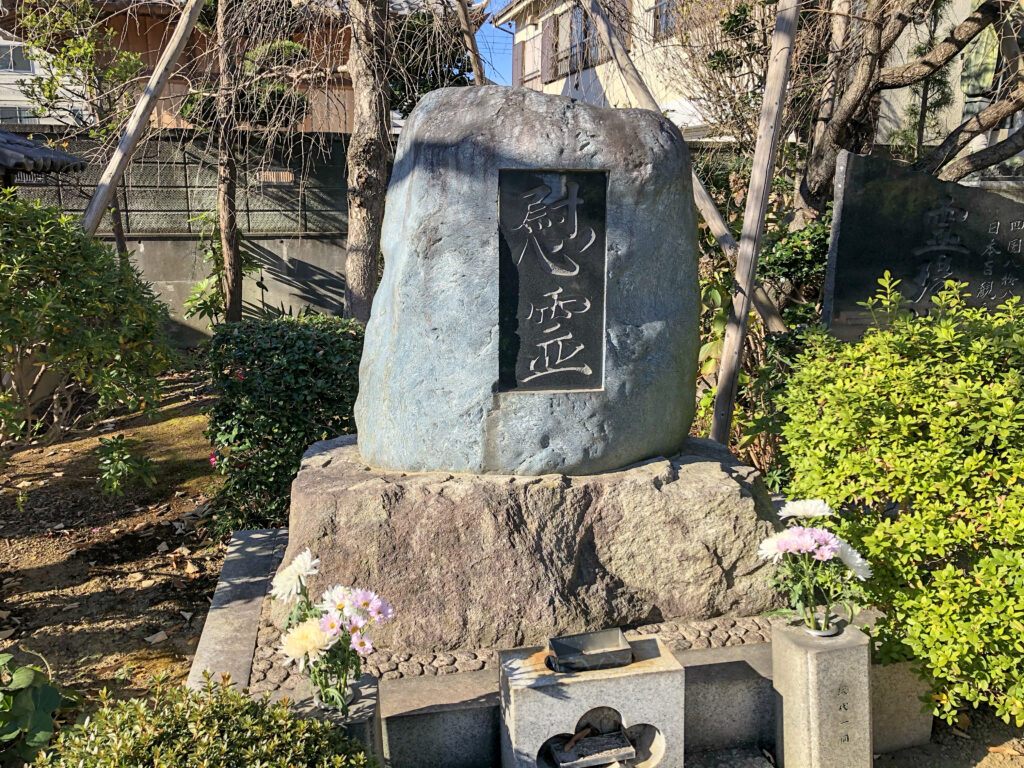
When the Japanese visit, they clean around the grave, burn incense, and replace flowers. There are incense stands and two flower vases on each grave. They will also pour water over the grave using a bamboo bucket and ladle.
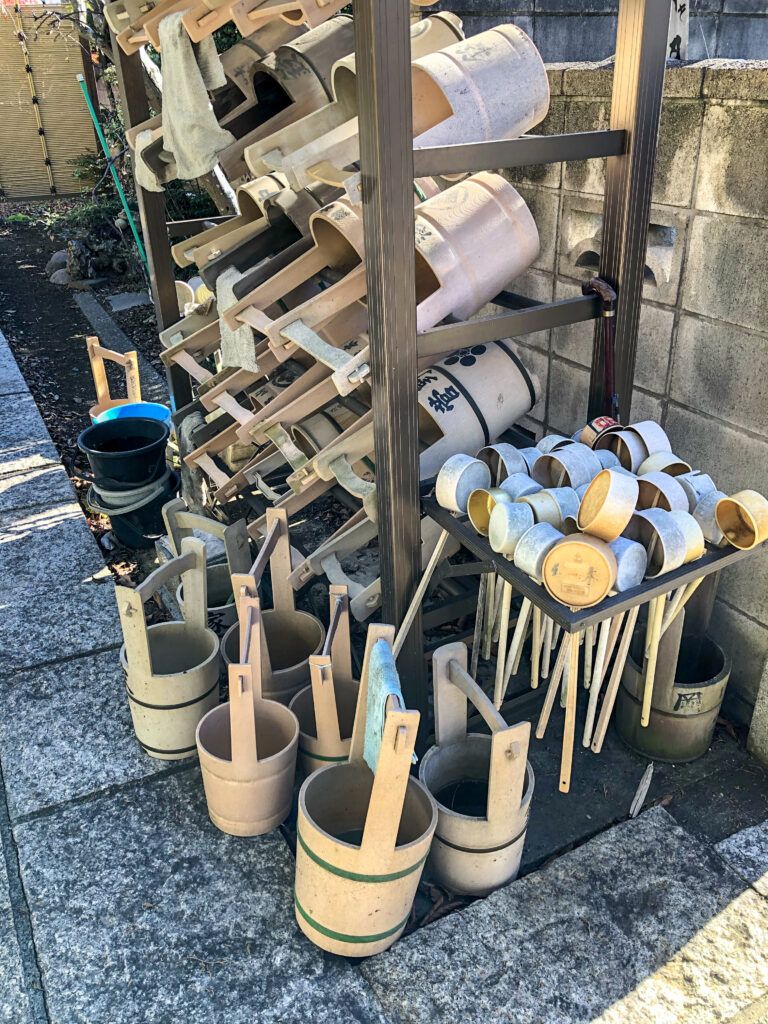
After all of this, they will place items on the grave that the ancestor enjoyed in life. Sometimes favorite drink or food is left and other times an item, perhaps a pocket watch or needle and thread. No one bothers the graves or takes any items for fear of bad luck. When a family member visits again, the items are replaced with fresh ones.
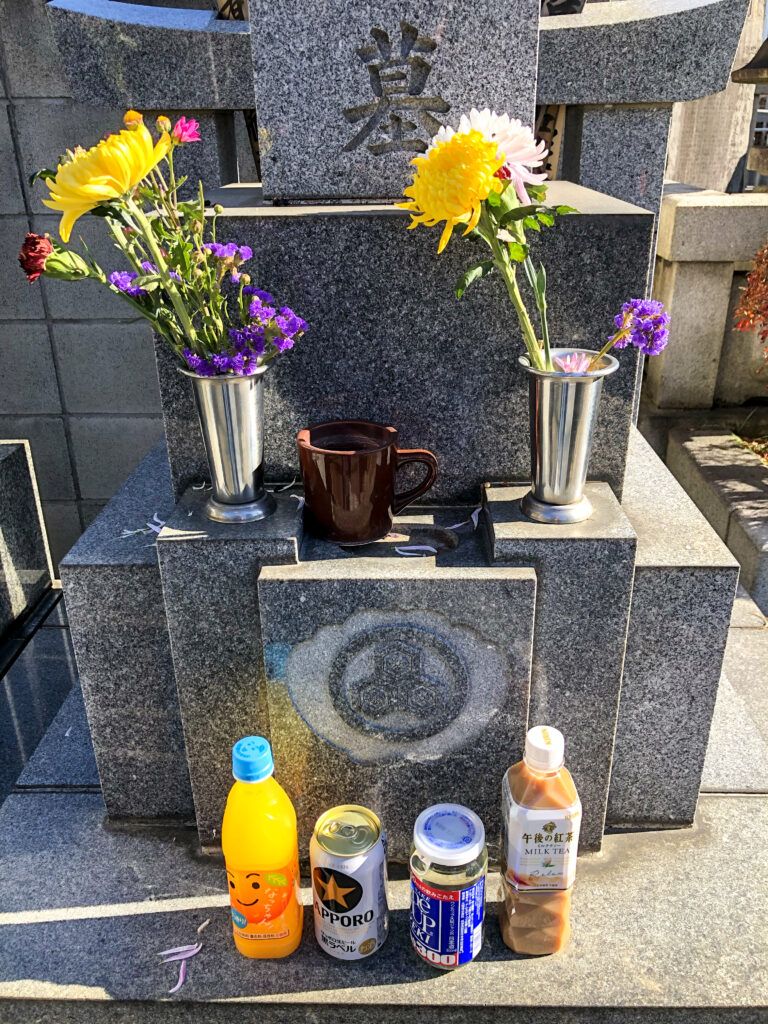
Visit
There are several thousand temples and cemeteries throughout Japan you can visit. While popular ones are the usual attractions for tourists, I find that a small temple is the best place to visit, it’s quiet, peaceful, and restful. There’s nothing like taking a nap under the cherry trees in mid-spring with cherry blossom peddles falling all around you.
Come to Japan once, and it could change your life. It did mine.
Check out a Japanese temple here. It’s a small shrine in an out of the way place. Just be sure to bring some bread crumbs.
Have you visited a Japanese temple or cemetery? Share your experience in the comment section below.
Do you have a question about Japanese temples or cemeteries? Please leave your question in the comment section below. I will do my best to answer you with the correct information.
